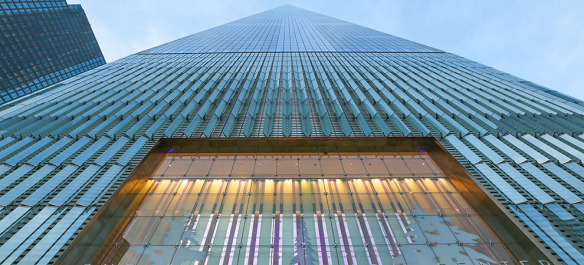International Monetary Fund | Christine Lagarde | November 14, 2016 | Los Angeles
Christine Lagarde, the Managing Director of the International Monetary Fund since July 2011, recently spoke in Los Angeles on the current and future states of women empowerment. The International Monetary Fund, IMF, formed in 1944, is an international organization headquartered in Washington, D.C. composed of 189 countries whose goal is “to foster global monetary cooperation, secure financial stability, facilitate international trade, promote high employment and sustainable economic growth, and reduce poverty around the world.”
Here are excepts from her Christine Lagarde’s speech:
Your energy and commitment are what we need in a world that still has many obstacles for women and girls to achieve their full potential, and where gender discrimination is still an issue that we have to deal with.
No doubt, we have already come a long way. In education, we have seen impressive declines in gender gaps around the world. In colleges, women are catching up in science and math, and businesses are realizing that a more diverse workforce adds a lot of shareholder value.
And of course, having women in leadership positions—in business and public office—is a powerful signal for both men and women. Just think of the role Chancellor Merkel is playing in Europe, for example, or the inspiring example of Aung San Suu-Kyi in Myanmar.
We certainly need more women who can raise awareness and lead by example.
Of course, the IMF has been promoting fundamental change for more than 70 years. We provide financial assistance to countries in need and help them get back on their feet. We assess the economic health of all our members and provide them with recommendations on economic policies.
With all these issues on our plate, why do we care so deeply about gender? Not just because it is a moral issue, but because gender equality is critical for the economic well-being of both men and women, of society as a whole.
We know—based on a wealth of research and experience—that empowering women can be an economic game changer for any country. For instance, if women were to participate in the labor force to the same extent as men, national income could increase by 5 percent in the U.S., 9 percent in Japan, and 27 percent in India.
Equal pay and better economic opportunities for women boost economic growth—creating a bigger pie for everyone to share, women and men alike. Better opportunities for women also promote diversity and reduce economic inequality around the world. It is an economic no-brainer.
Across the globe, women are still facing a triple-disadvantage. They are less likely than men to have a paid job—in fact, only half of the world’s working-age women are employed. If they do find paid employment, it is more likely to be in the informal sector. And if they eventually get a job in the formal sector, they earn, on average, three-quarters as much as men—even with the same level of education, and in the same occupation.
Here in California, for example, in Hollywood, we know that even top female actors earn significantly less than their male counterparts. We also know that some of the hottest tech startups have yet to understand that giving women a fair shot is good for innovation and good for business.
But before I move on to what we can do, let us not forget that far too many women are still fighting for basic human rights—including safety, health, and liberty.
We also need to push for smarter tax policies, including here in the United States.
So if you add up all things that can be done in each country, you get a powerful global impact. A global economic game changer.
The good news is that the most important countries have understood the need for gender equality—and that includes a group of leading economies—known as the G-20—that account for 85 per cent of world GDP and two-thirds of its population.
These countries—including the U.S.—have pledged to reduce the gap in women’s labor force participation by 25 percent by the year 2025—which would create an estimated 100 million more jobs by 2025. This would be a huge impetus to growth and would reduce poverty and inequality.
This objective is critical, and yet – even in the most progressive countries, progress towards gender equality has been painfully slow.
A good example is Iceland, which elected its first female president long ago, in 1980—and yet women still earn 14‑18 percent less than men. In protest over that pay gap, thousands of Icelandic women recently left their workplaces at exactly 2:38 pm—because they are effectively not being paid for the rest of the day. We saw a similar protest in France last week—and for good reason.
New research shows that global efforts to close the gender gaps in pay and labor force participation have slowed so dramatically over the past year, that full economic equality may not be reached for another 170 years.
Are you prepared to wait until 2186? Certainly not! Your generation has the opportunity—and the power—to bend the arc of history towards greater gender equality and more inclusive global growth.
You can vote with your time, your wallet, and your social media accounts. You can run for office, climb the corporate ladder, and start your own venture.
You can mentor others and build coalitions with those who share your view. And you should certainly learn from those who disagree with you.
And one more thing: as you move into leadership positions, you can be the best possible version of yourself—by hiring women, promoting women, investing in women, and by promoting civility in public and private discussions.
To read the full article, see Christine Lagarde’s empowering speech on the IMF website.






 Villa Les Cèdres, the world’s most expensive house Photo: YouTube
Villa Les Cèdres, the world’s most expensive house Photo: YouTube A view from Cap Ferrat Photo: Wikipedia
A view from Cap Ferrat Photo: Wikipedia Villa Les Cèdres as it was when King Leopold was its owner
Villa Les Cèdres as it was when King Leopold was its owner


















 From CBRE 2016 Global Real Estate Market Outlook
From CBRE 2016 Global Real Estate Market Outlook